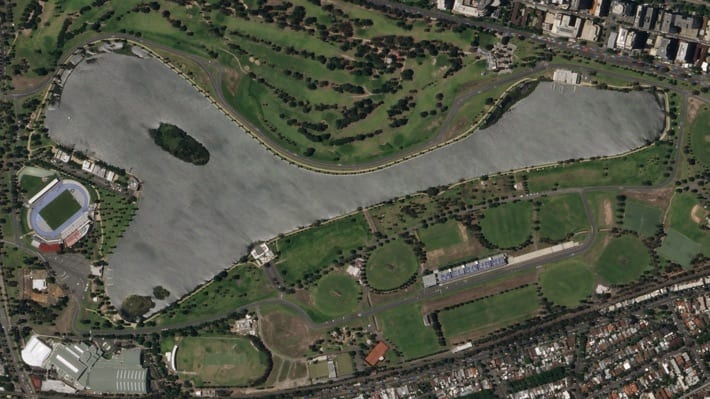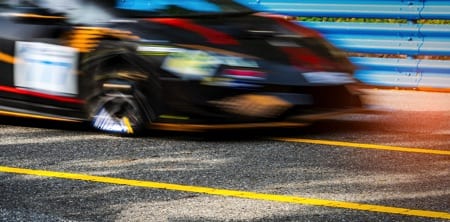
Formula One seasons are made up of different Grand Prix, which take place on circuits all around the world. The cars are the fastest road-course racing vehicles in existence, which is why the surfaces that they’re raced on have to be specially modified. There are a number of street-based circuits used, though, and we’re going to tell you about them here.
F1 Circuit Design
The design of Formula One circuits is important, with certain things seen as a necessity. There has to be a straight stretch of road, for example, that can be used as the location for the starting grid. There also has to be an area for a pit lane, allowing drivers to stop for tyre changes and other mechanical alterations. After that, circuits can vary wildly from one another.
Most circuits around the world run in a clockwise direction, largely to stop the drivers from getting neck pain when having to turn predominantly into left-handed corners on counter-clockwise courses. There’s also local things to think about, such as the need for a hotel with at least 5,000 rooms to accommodate everyone.
For that reason, the majority of courses in operation around the world are purpose-built, but there are five street circuits currently in use. Other street circuits come and go, with cities like Las Vegas and Detroit having offered ones in the past. Whilst the safety of drivers is a primary concern, some courses like Monaco are still used because of the associated glamour.
The Five Street Circuits
At the time of writing, there are just five street circuits that are used for a Formula One Grand Prix. Before we talk in more detail about the logistics of hosting races on the street, it’s worth having a look at all five of them and explaining how they work.
Circuit de Monaco

Arguably the most famous street circuit in the world if not the most famous circuit of any kind, the Circuit de Monaco is a little over two-miles in length and features nineteen turns. At the time of writing, the record lap on the circuit is one minute fourteen point two-sixty seconds, raced by Max Verstappen for Red Bull Racing in 2018.
The circuit is laid out on the streets of Monte Carlo and La Condamine and is used twice a year; once for Formula One and once for either Formula E or the Historic Grand Prix of Monaco, depending on whether it is an odd or an even year. It makes up the Triple Crown of Motorsport alongside the Indianapolis 500 and the 24 Hours of Le Mans.
The first race on the streets of Monaco was held in 1929 and the course is known for being narrow with elevated shifts and tight corners. It is considered to be one of the most demanding tracks in the sport, boasting both the slowest corner and one of the fastest. It takes six weeks to build the course and another three to dismantle it.
Albert Park Circuit

Built around Albert Park Lake in Melbourne Australia, the course was first opened in 1953 and then re-opened in 1996. It is where the Formula One Australian Grand Prix, the Supercars Championship Melbourne 400 and the races that surround those events take place every year and has an FIA Grade 1 licence. The course is just over three-miles long.
Even though the course is made up of roads that are normally open to the public, it offers characteristics that are usually associated with dedicated racetracks. The grass and gravel run-off areas that serve as safety zones are re-built every year. Lake Albert itself is a small, man-altered lake and when the roads around it were re-built in 1996 it was to ensure their smoothness.
The course is considered to be one of the easiest to drive on the Grand Prix circuit and drivers tend to like it because it is fast. The trackside fencing, pedestrian overpasses and grandstands, as well as other motorsport infrastructure, take six weeks to build and the limit access to local amenities during this time means it’s not popular with the locals.
Marina Bay Street Circuit

The Marina Bay Street Circuit in Singapore is a little over three-miles long and has capacity for ninety thousand people. It opened in August of 2008, exactly a year after ground was broken on the construction, and cost thirty-three million Singapore dollars. It has been altered a number of times since then and boasts a Grade 1 licence from the FIA.
The Singapore circuit has a unique claim to fame: it has had a safety car appearance in every race since it opened. It is also unique in that a part of the track goes underneath a section of the Floating Platform grandstand. It is an unforgiving circuit that was initially cricised by drivers for being too bumpy in places and unsuitable to the Singapore climate.
The complaints by drivers were what led to the numerous alterations that have taken place over the years, with the Singapore authorities constantly tweaking and changing the circuit. The fact that the Singapore Grand Prix is a night race means that floodlights had to be built, with around one thousand six hundred specially-built ones installed.
Sochi Autodrom

Sochi might well be a city more commonly associated with the winter Olympics, but it is also the location of the Russian Grand Prix. Around three and a half miles in length, it opened in 2014 and hosts numerous races other than just the Formula One. In the past, it was known as both the Sochi International Street Circuit and the Sochi Olympic Park Circuit.
It has similarities to both the Olympic Green Circuit in Beijing and the Sydney Olympic Park Circuit in that a former Olympic complex forms the basis of the track. It is the fourth-longest circuit on the F1 calendar, with only the Spa-Francorchamps in Belgium, Baku City Circuit in Azerbaijan and Silverstone in the United Kingdom being longer than it.
The starting grid for the circuit is built next to the railway station and sees drivers head towards the Black Sea. When it was opened it received rave reviews from the sport’s governing body, with everything declared to be ‘in very good condition‘. As with most things in Russia, there was some controversy in the build-up to the inaugural race that was downplayed.
Baku City Circuit

The fifth street circuit is the Baku City Circuit, which is constructed near Baku Boulevard in the capital of Azerbaijan. The circuit is the second-longest in the Formula One calendar, with only the Circuit de Spa-Francorchamps beating its three point seven mile distance. It was opened for the 2016 European Grand Prix and the inaugural Azerbaijan Grand Prix took place in 2017.
It is one of only a few circuits that run counter-clockwise and was projected to be the world’s fastest street circuits before it opened. That did indeed end up being the case, with maximum speeds of three hundred and sixty kilometres per hour reachable on the course. It boasts twenty turns and there are nine grandstands for spectators.
Given Azerbaijan’s links to oil, it’s perhaps no surprise that the city of Baku was added to the list of Formula One locations. It is one that drivers enjoy because it offers twisting city sections that are akin to those found in Monaco as well as straights similar to the ones in Monza that allow the drivers to go flat out. A driver’s management of their fuel consumption can be crucial here.
The Logistics of Street Circuits
The beauty of purpose-built circuits from Formula One’s point of view is that every aspect of them can be controlled to offer the best possible experience for the drivers. Safety is obviously at the forefront of everyone’s mind regardless of where the circuit is built, but that’s much easier done when the circuit is only there for racing than when it takes place over regular streets.
There is a huge amount that goes into the preparation of street circuits every year, with the logistics of building them a massive challenge for the race organisers. Singapore, for example, is one of the most densely populated cities in the world and that has to be taken into account when transforming Marina Bay into a venue suitable for the running of a Formula One race.
Looking at Singapore as an Example

Four months before the race in Singapore is due to get underway, a twenty-five thousand strong team moves in and begins preparations. The race-related infrastructure is kept in a thirty-eight thousand square foot storage facility in the east of Singapore in between races, with construction of the circuit labelled as being similar to the building of the world’s biggest Scalextric.
Items, such as concrete barriers, fences, temporary bridges and ticketing booths, all need to be installed on the streets, as well as debris fencing. There is a polymer modified binder that was installed on the track surface in order to give the cars 20% grip, so that needs to be inspected every year and repairs carried out where necessary.
Once the race has taken place the city is allowed to being to return to something resembling normality. That begins with roads being reopened and the various temporary sections of infrastructure being removed over the following month. The floodlights used to light the track up are four times brighter than standard floodlights and require more than one hundred thousand metres of cabling.
Another thing that adds to the excitement of the Singapore race is that the next race takes place the following weekend in Sochi, Russia. That means that the pack down for the Formula One teams begins before the race has even finished as they have to engage in the process of moving everything eight thousand miles as soon as possible.
The Future of F1 Street Races
 In 2018, it was announced that Hanoi would be added to the list of Formula One street circuits in 2020, only for the event to be postponed because of the outbreak of the Coronavirus around the world. One thing that was certain even before the Covid-19 pandemic, however, was the fact that Formula One as an industry seemed to be keen to introduce more street circuits.
In 2018, it was announced that Hanoi would be added to the list of Formula One street circuits in 2020, only for the event to be postponed because of the outbreak of the Coronavirus around the world. One thing that was certain even before the Covid-19 pandemic, however, was the fact that Formula One as an industry seemed to be keen to introduce more street circuits.
Both the Miami Grand Prix and one rumoured to be introduced in Denmark are scheduled to be street circuits, with the latter taking place around Copenhagen. It was a deliberate move by Liberty Media to ensure more street circuits, given that they’re popular with racing fans thanks to the challenge that they offer the drivers, as well as their scenic nature.
The idea of hosting a street race in London has been a dream of the F1 powers-that-be for many years. There has long been a hope that it could happen, even if it was only a one-off, because the publicity for Formula One would be better than money could buy. It’s not hugely likely, given that Formula E managed it for two years before complaints but paid to it.